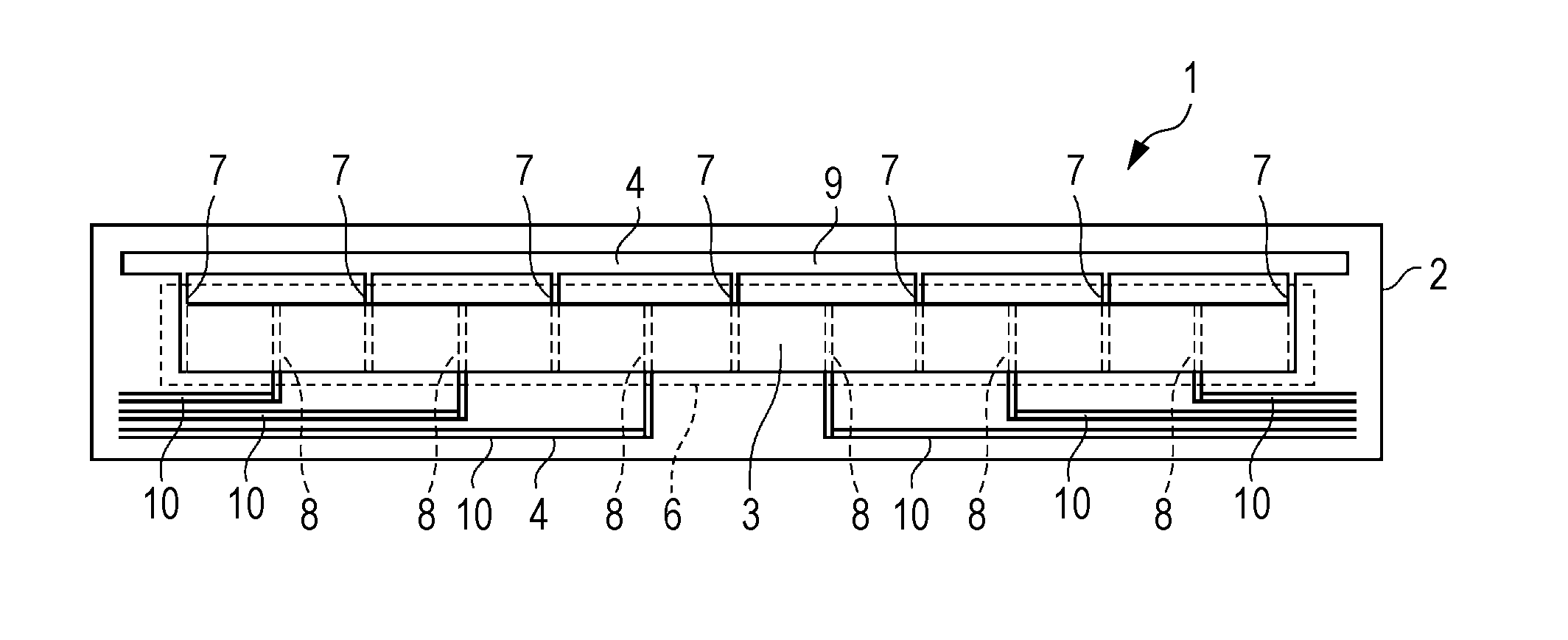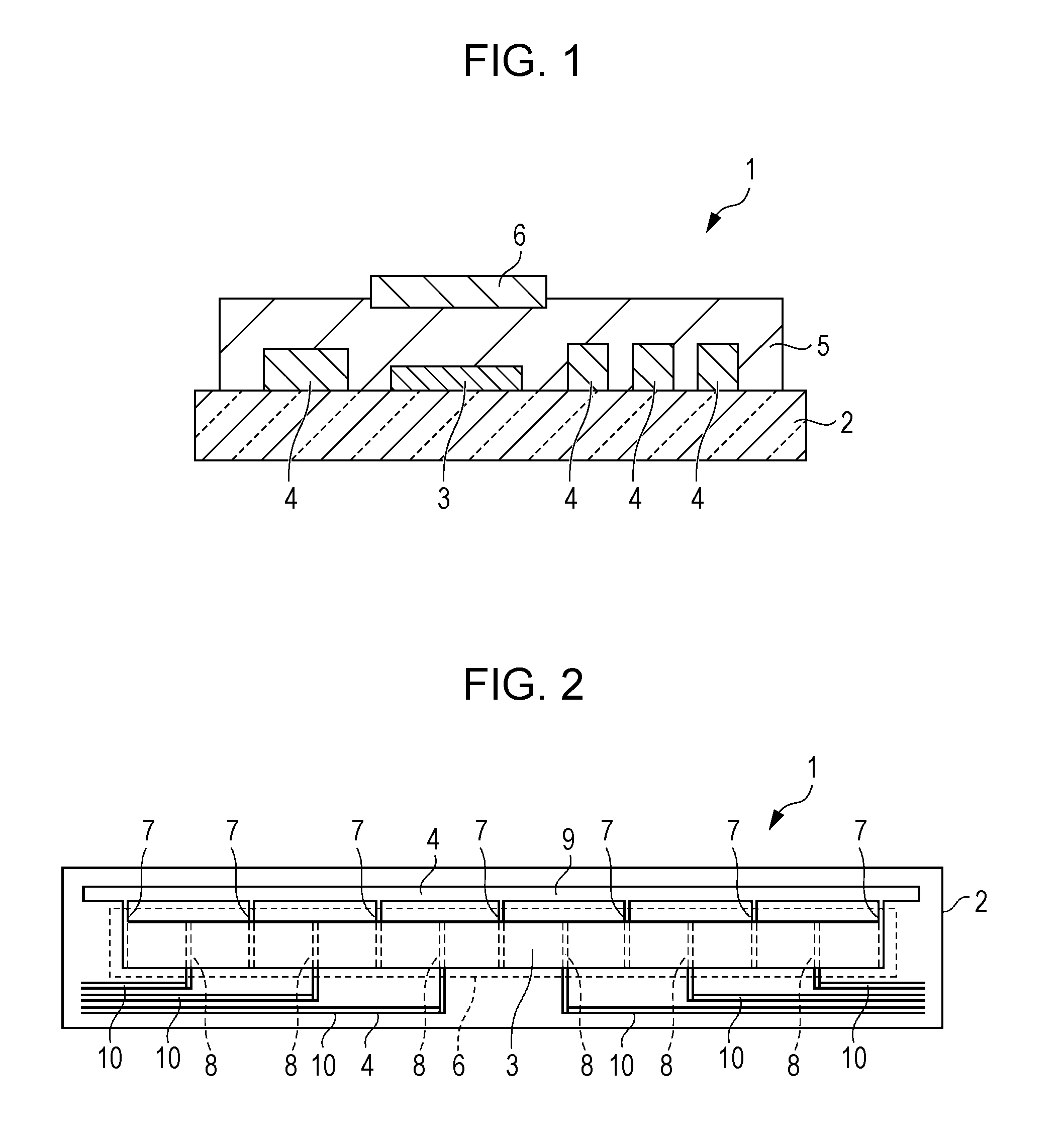Heater for fixing device
a technology for fixing devices and heaters, which is applied in the direction of ohmic-resistance heating, electrographic process apparatuses, instruments, etc., can solve the problems of heaters warping, low-expansion fillers contained in the overcoat glass layer, and alkali metals contained in glass materials may migrate, so as to reduce the fluidity of the paste, reduce the surface smoothness, and reduce the effect of fluidity
- Summary
- Abstract
- Description
- Claims
- Application Information
AI Technical Summary
Benefits of technology
Problems solved by technology
Method used
Image
Examples
examples
[0057]Overcoat layers having a thickness of about 25 μm were formed over the entire surfaces of 100 mm square glass substrates. The amount of warpage and migration of each substrate were measured.
[0058]In the Example, an overcoat layer was formed using an alkali-free glass containing 20% fused silica (particle size=0.7 μm) as the first filler.
[0059]In the Comparative Example, an overcoat layer was formed using a glass containing 15% eucryptite (lithium-containing low-expansion filler) as the second filler.
[0060]An experiment was carried out in which the change in the resistance of a ruthenium resistor was measured at a heating temperature of 500° C. using gold and silver electrodes arranged at a distance of 0.5 mm from each other.
[0061]The experimental results are summarized in Table 1 below and FIG. 3.
TABLE 1FillerThick-MigrationGlass fritFillercontentnessWarpageresistanceZnO-basedEucryptite15 wt %25 μm 0.3-0.4 mmPoorZnO-basedFused20 wt %25 μm0.03-0.06 mmGoodsilica
[0062]As shown in...
PUM
 Login to View More
Login to View More Abstract
Description
Claims
Application Information
 Login to View More
Login to View More - R&D
- Intellectual Property
- Life Sciences
- Materials
- Tech Scout
- Unparalleled Data Quality
- Higher Quality Content
- 60% Fewer Hallucinations
Browse by: Latest US Patents, China's latest patents, Technical Efficacy Thesaurus, Application Domain, Technology Topic, Popular Technical Reports.
© 2025 PatSnap. All rights reserved.Legal|Privacy policy|Modern Slavery Act Transparency Statement|Sitemap|About US| Contact US: help@patsnap.com



